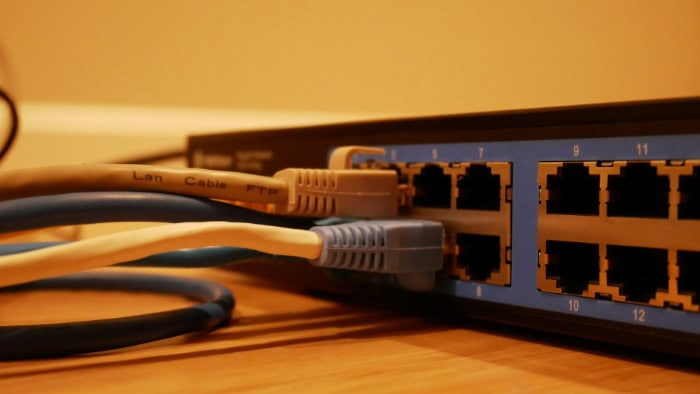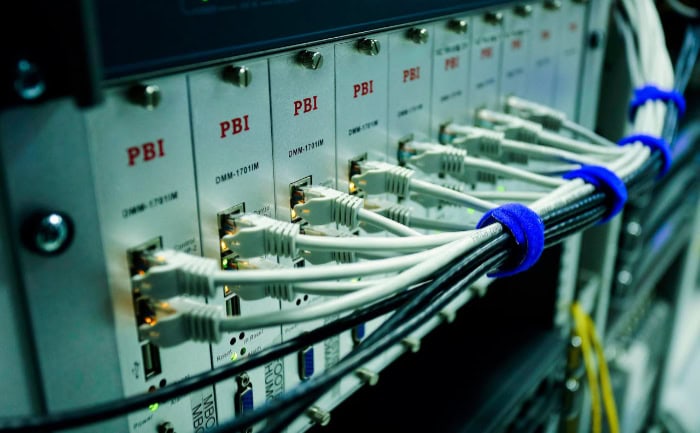Static IP vs. Dynamic IP Addresses: Why Your Choice Matters

Every device connected to the internet, from smartphones to servers, relies on IP addresses to send and receive data. These numerical labels act as virtual postcards, ensuring that information reaches its intended destination. However, not all IP addresses are created equal.
The two main types, static and dynamic IPs, each have their own unique characteristics and use cases. Static IP addresses remain constant, providing a fixed identity for devices, while dynamic IPs change over time, offering flexibility and adaptability.
The choice between these two options can significantly impact network performance, security measures, and overall functionality.
Fundamentals of IP Addresses
IP addresses are unique numerical labels assigned to each device connected to a computer network that uses the Internet Protocol for communication. These addresses serve as identifiers, much like postal addresses for houses, allowing data packets to be sent to the correct destination.
An IP address consists of a string of numbers separated by periods (in IPv4) or colons (in IPv6).
The primary purpose of IP addresses is to enable the routing of data packets between devices on a network. When you send an email, browse a website, or stream a video, your device uses IP addresses to establish connections and exchange information with servers and other devices across the internet.
IPv4 and IPv6: Two Generations of IP Addresses
As the internet has grown, so too has the need for IP addresses. This growth led to the development of two main versions of IP addresses: IPv4 and IPv6.
IPv4, the fourth version of the Internet Protocol, uses 32-bit addresses, which allows for approximately 4.3 billion unique addresses. These addresses are typically represented as four groups of numbers separated by periods, such as 192.168.1.1.
IPv6, the sixth and most recent version of the Internet Protocol, was developed to address the limitations of IPv4. It uses 128-bit addresses, providing an astronomically large number of unique addresses (approximately 340 undecillion).
IPv6 addresses are represented as eight groups of four hexadecimal digits separated by colons, such as 2001:0db8:85a3:0000:0000:8a2e:0370:7334.
The transition from IPv4 to IPv6 is ongoing, with many networks now supporting both protocols to ensure compatibility and prepare for the future of internet connectivity.
IP Addresses in Network Communication
IP addresses play a vital role in network communication by enabling devices to locate and communicate with each other across the internet. When you type a website URL into your browser, your device sends a request to a Domain Name System (DNS) server to translate that human-readable domain name into an IP address.
Once the IP address is obtained, your device can establish a connection with the web server hosting the website.
In addition to facilitating communication between devices, IP addresses also help in:
- Identifying the geographical location of devices
- Implementing network security measures
- Managing network resources and access control
- Troubleshooting network issues
IP addresses work in conjunction with other networking protocols, such as the Transmission Control Protocol (TCP), to ensure reliable and efficient data transmission across networks. This collaboration of protocols forms the foundation of the internet as we know it today.
Static IP Addresses

A static IP address is a permanent, fixed address assigned to a device on a network. Unlike dynamic IP addresses, which can change periodically, static IP addresses remain the same unless manually modified by a network administrator.
This means that a device with a static IP address will always be reachable at the same address, making it easier to locate and connect to on a network.
Static IP addresses are typically represented in the same format as other IP addresses, such as 192.168.1.100 for IPv4 or 2001:0db8:85a3:0000:0000:8a2e:0370:7334 for IPv6.
Assignment Process
Static IP addresses are manually assigned to devices by network administrators. This process involves configuring the device's network settings to use a specific IP address, subnet mask, default gateway, and DNS server information.
The assigned IP address is typically chosen from a pool of available addresses within the network's address range.
To ensure proper network functionality, it's crucial to maintain an accurate record of assigned static IP addresses and avoid conflicts with other devices on the network.
Common Use Cases
Static IP addresses are commonly used in situations where consistent and reliable access to a device is required. Some typical use cases include:
- Servers: Web servers, email servers, and other types of servers often require static IP addresses to ensure that clients can consistently locate and connect to them.
- Network devices: Routers, switches, and firewalls may be assigned static IP addresses to simplify network management and configuration.
- Remote access: Static IP addresses can facilitate remote access to devices, such as security cameras or remote desktop connections.
- Gaming and hosting: Online gaming servers and hosted services may use static IP addresses to provide a stable and consistent connection for users.
- VoIP and video conferencing: Static IP addresses can help maintain the quality and reliability of voice and video calls over the internet.
Advantages and Disadvantages
Using static IP addresses offers several advantages:
- Consistency: Devices with static IP addresses are always reachable at the same address, simplifying access and configuration.
- Reliability: Static IP addresses can provide a more stable connection for services that require constant accessibility.
- Simplified port forwarding: Static IP addresses make it easier to set up port forwarding rules for remote access or hosting services.
However, there are also some disadvantages to consider:
- Management overhead: Assigning and managing static IP addresses can be time-consuming and require manual intervention from network administrators.
- Limited scalability: In large networks, manually assigning static IP addresses can become cumbersome and lead to address exhaustion.
- Higher cost: Internet Service Providers (ISPs) often charge more for static IP addresses compared to dynamic IP addresses.
- Potential security risks: Static IP addresses can make devices more vulnerable to targeted attacks, as they are easier to identify and track.
Dynamic IP Addresses

A dynamic IP address is a temporary address assigned to a device when it connects to a network. These addresses are not permanent and can change each time a device reconnects to the network or after a specified period.
Dynamic IP addresses are typically assigned from a pool of available addresses managed by a network's DHCP server.
The primary characteristic of dynamic IP addresses is their temporary nature. This impermanence allows for more efficient use of available IP addresses, as they can be reassigned to different devices as needed.
Dynamic IPs are represented in the same format as static IPs, using the standard IPv4 or IPv6 notation.
DHCP and Automatic Assignment
The Dynamic Host Configuration Protocol (DHCP) is the mechanism responsible for assigning dynamic IP addresses to devices on a network. DHCP servers manage a pool of available IP addresses and lease them to devices as they connect to the network.
When a device joins a network, it sends a DHCP discovery message to request an IP address. The DHCP server responds with an available address, along with other network configuration information such as the subnet mask, default gateway, and DNS server addresses.
This process occurs automatically, requiring no manual configuration from the user or network administrator.
DHCP leases have a predetermined duration, after which the device must renew its lease or request a new IP address. This lease system allows for efficient address management and helps prevent address conflicts on the network.
Typical Scenarios for Dynamic IPs
Dynamic IP addresses are commonly used in various networking scenarios, including:
- Home networks: Most residential internet connections use dynamic IP addresses, as they are more cost-effective for Internet Service Providers (ISPs) to manage.
- Corporate networks: Large organizations often employ dynamic IP addressing to simplify network management and accommodate a large number of devices.
- Public Wi-Fi hotspots: Dynamic IP addresses are ideal for public networks where users frequently connect and disconnect.
- Mobile devices: Smartphones and tablets typically receive dynamic IP addresses when connecting to cellular networks or Wi-Fi hotspots.
- Virtual Private Networks (VPNs): Many VPN services use dynamic IP addresses to enhance user privacy and security.
- Internet of Things (IoT) devices: Smart home devices and other IoT gadgets often rely on dynamic IP addressing for simplified network integration.
Pros and Cons
Dynamic IP addresses offer several advantages:
- Efficient address utilization: Dynamic addressing allows for better management of available IP addresses, reducing the risk of address exhaustion.
- Simplified network management: Automatic address assignment reduces the administrative overhead associated with manually configuring IP addresses.
- Cost-effective: Dynamic IP addresses are generally less expensive than static IPs, making them more accessible for home users and small businesses.
- Enhanced privacy: The changing nature of dynamic IPs can make it more difficult for malicious actors to track or target specific devices.
However, dynamic IP addresses also have some drawbacks:
- Inconsistent remote access: Devices with dynamic IPs may be harder to access remotely, as their address can change unexpectedly.
- Potential service interruptions: IP address changes can sometimes cause brief disconnections or service interruptions.
- Less suitable for hosting services: Running servers or hosting services can be more challenging with dynamic IP addresses, as the address may change and disrupt connections.
- DNS update delays: Changes in dynamic IP addresses may not be immediately reflected in DNS records, potentially causing temporary access issues.
Dynamic IP addresses play a crucial role in modern networking, offering flexibility and efficiency in address management. While they may not be suitable for all scenarios, their widespread use in home and business networks demonstrates their effectiveness in meeting the needs of most users and devices.
Comparing Static and Dynamic IPs

When deciding between static and dynamic IP addresses for a network, it's essential to consider various factors that can impact performance, security, and overall functionality.
Security Considerations
Security is a critical concern when choosing between static and dynamic IP addresses. Static IPs can potentially be more vulnerable to targeted attacks, as they remain constant and are easier for malicious actors to identify and track.
This consistency can make it simpler for attackers to gather information about a device or network over time.
On the other hand, dynamic IP addresses can offer a degree of security through obscurity. The changing nature of dynamic IPs makes it more challenging for attackers to persistently target a specific device.
However, it's important to note that dynamic IPs alone do not provide complete protection and should be used in conjunction with other security measures, such as firewalls and encryption.
Cost Implications
The cost of implementing static or dynamic IP addresses can vary depending on the network setup and the policies of Internet Service Providers (ISPs). In general, static IP addresses are more expensive than dynamic ones.
ISPs often charge a premium for static IPs, as they require manual configuration and management.
Dynamic IP addresses are typically more cost-effective, as they are automatically assigned and managed by the ISP's DHCP servers. This automation reduces the administrative overhead for the ISP, allowing them to offer dynamic IPs at a lower cost to customers.
Reliability and Stability
Reliability and stability are important considerations when comparing static and dynamic IP addresses. Static IPs offer a higher degree of reliability, as they remain constant and do not change unless manually reconfigured.
This consistency is particularly beneficial for services that require a stable connection, such as web servers, email servers, or remote access solutions.
Dynamic IP addresses, while more flexible, can sometimes lead to brief service interruptions or disconnections when the assigned address changes. These changes can occur due to DHCP lease expirations, network issues, or ISP policies.
However, modern DHCP implementations have become more stable and efficient, minimizing the impact of address changes on network performance.
Management and Flexibility
The choice between static and dynamic IP addresses also affects network management and flexibility. Static IPs require more manual configuration and management from network administrators.
Each device must be individually configured with its assigned IP address, subnet mask, and other network settings. This process can be time-consuming, especially in larger networks with many devices.
Dynamic IP addresses, on the other hand, offer greater flexibility and easier management. DHCP servers automatically handle the assignment and configuration of IP addresses, reducing the administrative burden on network administrators.
This automation makes it simpler to add new devices to the network and allows for more efficient use of available IP addresses.
However, the flexibility of dynamic IPs can also present challenges in certain scenarios. For example, setting up port forwarding or remote access to devices with dynamic IPs can be more complex, as the IP address may change unexpectedly.
In such cases, additional solutions like Dynamic DNS (DDNS) can be used to map a static domain name to a dynamic IP address.
Technical Considerations

When implementing static or dynamic IP addresses in a network, several technical aspects must be taken into account. These considerations include the configuration processes involved, the potential impact on network performance, ISP policies and limitations, and alternative solutions like DHCP reservations and pseudo-static IPs.
Configuration Processes
The configuration processes for static and dynamic IP addresses differ significantly. Static IP addresses require manual configuration on each device.
This process involves accessing the device's network settings and entering the assigned IP address, subnet mask, default gateway, and DNS server information. Network administrators must ensure that each device is correctly configured and that there are no IP address conflicts within the network.
On the other hand, dynamic IP addresses are automatically assigned by DHCP servers. Devices configured to obtain an IP address automatically will send a DHCP discovery message when connecting to the network.
The DHCP server will then assign an available IP address from its pool and provide the necessary network configuration information. This automated process simplifies device configuration and reduces the risk of human error.
Network Performance Impact
The choice between static and dynamic IP addresses can have an impact on network performance. Static IP addresses, being constant and unchanging, can provide a more stable network environment.
Devices with static IPs maintain consistent connections, which can be beneficial for services that require uninterrupted communication, such as VoIP or video streaming.
Dynamic IP addresses, while offering flexibility, can sometimes lead to brief disruptions in network connectivity. When a device's DHCP lease expires or the network experiences issues, the device may be assigned a new IP address, causing a temporary loss of connection.
However, modern DHCP implementations have become more efficient, minimizing the impact of IP address changes on network performance.
ISP Policies and Limitations
Internet Service Providers (ISPs) play a significant role in determining the availability and cost of static and dynamic IP addresses. Many ISPs offer dynamic IP addresses as the default option for residential and small business customers.
These dynamic IPs are often subject to periodic changes based on the ISP's network management policies.
Obtaining a static IP address from an ISP typically requires a specific request and may incur additional costs. Some ISPs may have limited availability of static IP addresses or restrict their use to certain types of accounts, such as business or enterprise plans.
It's essential to consult with the ISP to understand their policies and limitations regarding static and dynamic IP addresses.
DHCP Reservations and Pseudo-Static IPs
In some cases, network administrators may require the benefits of both static and dynamic IP addresses. DHCP reservations and pseudo-static IPs offer a compromise between the two approaches.
DHCP reservations allow network administrators to assign a specific IP address to a device within the DHCP server's configuration. The DHCP server will always assign the reserved IP address to the designated device, based on its unique MAC address.
This approach provides the consistency of a static IP address while still leveraging the automation and management benefits of DHCP.
Pseudo-static IPs, also known as static DHCP or DHCP static mapping, involve configuring the DHCP server to assign a specific IP address to a device indefinitely. The device still obtains its IP address through the DHCP process, but the assigned address remains the same across lease renewals.
This method offers the stability of a static IP address without the need for manual configuration on each device.
Conclusion
Static and dynamic IP addresses are fundamental components of modern networking, each offering distinct advantages and considerations. Static IPs provide consistent, unchanging addresses that are well-suited for servers, network devices, and applications requiring stable connectivity.
Dynamic IPs, on the other hand, offer flexibility, automation, and efficient address management, making them ideal for home networks, mobile devices, and large-scale deployments.
When selecting between static and dynamic IPs, network administrators must carefully evaluate factors such as security, cost, reliability, and management overhead. The choice ultimately depends on the specific requirements and priorities of the network environment.
In some cases, a combination of both approaches, such as DHCP reservations or pseudo-static IPs, can provide the benefits of both worlds.


